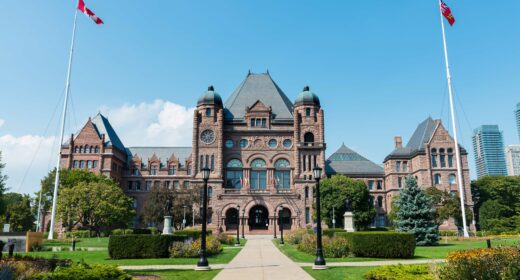Last June, a B.C. arbitrator ruled that a workplace policy restricting employees from wearing shorts and jeans was an unreasonable restriction on their personal rights. This decision, Canadian Union of Public Employees, Local 1767 v BC Assessment Authority, reaffirms the well-established law on rules relating to personal appearance.
The decision
The union representing British Columbia Assessment Authority (the “Authority”) filed a grievance when management introduced a new policy prohibiting jeans and shorts at the office.
The Authority includes 15 offices throughout B.C. who conduct real property assessments for taxation purposes.
Although not stated in their collective agreement, the Authority had a policy on workplace attire stating that “employees will come to work wearing appropriate and professional attire”. This policy was followed differently in different offices. The rural offices usually wore more casual clothes such as jeans and shorts, whereas the urban offices would save this attire for “casual” days.
The Vernon and Penticton offices (rural) amalgamated with the Kelwona office (urban) in the fall of 2010, and many of the transferred employees wore jeans and shorts to work. In December 2010, the office attempted to prohibit jeans, shorts and running shoes. When the managers received backlash from the employees, a committee was created to construct dress code guidelines. The committee described the workplace dress code to be “business casual” and the majority of employees accepted this guide.
In December 2013, the Kelwona office relocated into a more corporate office building. Managers took this opportunity to implement a more professional work attire that would reflect the standards of Metro Vancouver. This policy specifically prohibited blue jeans and shorts except for fundraisers and field work.
The union filed a grievance based on this new policy.
Arbitrator James Dorsey ruled that the blanket restriction on shorts and jeans was inconsistent with the company’s own policy and ordered it be rescinded.
Dorsey began by outlining the requirements management must satisfy in bringing a unilateral policy change. The employer must be able to demonstrate the rule is:
- Consistent with the collective agreement
- Reasonable
- Clear and unequivocal
- Brought to the attention of the employee affected before the employer acted on it
- Consistently enforced since its introduction.
Dorsey then reviewed the case law on personal appearance, emphasizing “there is no absolute right in an employer to create an employee in his own image”. Dorsey highlighted that an employer must be able to demonstrate, through objective evidence, that the grievor’s appearance resulted “in a threat to its image and consequent financial loss or at the very least that on the balance of probabilities the employee’s appearance threatens its image and therefore threatens a loss in business to the company”.
Dorsey found no objective evidence demonstrating that the grievor’s appearance affected customer opinion or had an adverse business impact. The policy was ruled inconsistent and unjustified:
“In imposing the change the Kelowna managers chose to limit the autonomy expressly given to the employees in the employer’s Workplace Attire Policy. They substituted their judgment for the judgment expressly given to the employees.”
Personal appearance – the law
This decision reaffirms decades of consensus in the law regarding an employer’s right to create policies affecting an employee’s personal appearance.
Beginning in the 1970s, when employers attempted to restrict sideburns and hair length, the balance became between the personal rights of the employee and the employer’s legitimate business interest.
The employer must be able to establish the following four elements to justify their policy:
- The policy has a legitimate business purpose
- It is rationally connected to that purpose
- It is likely to be effective in achieving its purpose
- The employer’s interest in obtaining compliance with the policy is more important than the interest of employees in choosing their personal appearance.
The employer must satisfy the above factors through objective evidence, such as surveys or customer complaints.
Policies that affect an employee’s appearance while off-duty will require stronger evidence of a legitimate business interest. When restricting a characteristic such as facial hair, the employee’s freedom is being restricted while not at work. This type of constraint will attract closer scrutiny from decision-makers.
Arbitrators must consider the changing social standards when assessing these policies. The 1970s focused on long hair and sideburns; the 1980s introduced concerns regarding men wearing earnings; and the 1990s focused on facial piercings. The arbitrators must be cognitive of the fact that as social standards change, so too will workplace rules and the reasonableness of the policy.
When considering the objective evidence, the arbitrator must consider the context in which the evidence was received. Surveys demonstrating customers’ opinions will receive strong scrutiny. The arbitrator must consider the form and nature of the questions, the type of poll, and the way in which the questions were asked.
Religious rights will also be considered when assessing a workplace policy on attire. In 2003, an arbitrator ruled that a policy restricting beards was against the grievor’s religious rights. The grievor was a follower of the Rastafarian religion and he was denied a promotion for not adhering to the clean-shaven rule. The arbitrator upheld the grievance and the matter was referred back to the employer to consider the employee for a promotion based on merit.
Working in the health field also will not justify an employer’s restriction on personal appearance. In many recent cases, employers have been unsuccessful in providing objective evidence demonstrating that tattoos and piercings negatively affect the healthcare provided. In January 2013, an arbitrator found against the Ottawa Hospital’s ban on revealing tattoos and excessive body piercings,
As sideburns were controversial in 1972, so tattoos and piercings are now. Anyone who has taken a stroll on a summer day knows that tattoos are no longer confined to sailors, stevedores and strippers.
Personal appearance policies that are implemented for the health and safety of their employees, however, will have a higher chance of success. In 2008, Maple Leaf and Schneider successfully demonstrated their policy against facial hair protected men from possible exposure to toxic chemicals. The arbitrator found the objectives were justified and that the employer was within their rights to reassign bearded employees who refused to comply.
Check out our other interesting articles to learn more on topics in Labour Law, topics on workplace policies and more.



